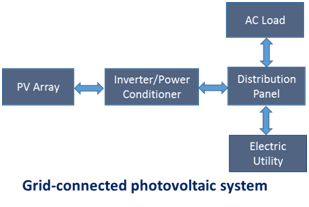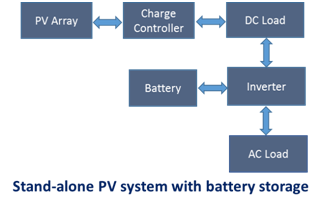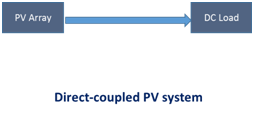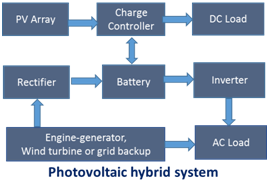Science → Solar Cells → Types of PV Systems
There are two type of photovoltaic power systems:
- Grid-connected or utility-interactive systems, and
- Stand-alone systems
These two types are based on their:
- Functional and operational requirements
- Component configurations, and
- How the equipment is connected to other power sources and electrical loads
Grid or utility-connected PV systems
Grid or utility-connected PV systems are designed to operate with the national electric grid. The Inverter or power conditioning unit (PCU) is the central component in grid-connected PV systems that converts DC power into AC power. PCU automatically stops supplying power to the grid when the utility grid is not working or down. A bi-directional interface between the PV system and the electric utility network could be designed that allows the AC power to supply either side depending on the demand or supply on either side. At night or a cloudy day when the electrical charges are higher than the PV system output, then loads are received from the electric utility to balance the required power. This safety feature is required in all grid-connected PV systems to ensure that the photovoltaic (PV) system will not continue supply into the utility grid when the grid is down for maintenance.


Stand-alone PV systems
Stand-alone PV systems are designed or sized to operate independent from the electric utility grid to supply DC and AC electrical loads. These systems may be powered by a PV array only, or may use the wind. These systems may also use engine-generator or utility power as an auxiliary power source and is called a PV-hybrid system.


The primary stand-alone PV system is a direct-coupled system, where the DC output of a PV array is directly connected to a DC load. As there is no electrical energy storage (batteries) in DC systems, the load only operates during sunlight hours, making these designs suitable for typical applications such as water pumps, ventilation fans, and small pumps for solar thermal water heating systems. In many stand-alone PV systems, batteries are used for energy storage.
Next: How PV Cells are Made?